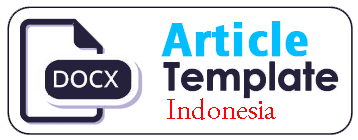Building A Penta Helix Collaboration Model On Mass Rapid Transit Jakarta
DOI:
https://doi.org/10.54849/monas.v5i2.182Keywords:
penta helix, collaborationAbstract
The population in Jakarta as a metropolis continues to increase along with the growing phenomenon of urbanization, which impacts increasing population mobility. The Jakarta Mass Rapid Transit (MRT) public transportation policy is significant in addressing urban mobility challenges and improving efficient transportation systems. This study aims to analyze the collaboration of the five pillars of penta helix on the Jakarta Mass Rapid Transit (MRT), both in government, companies, academics, media, and the environment in the development of the Jakarta MRT. The research used a qualitative method with a descriptive and exploratory design approach from January to August 2023. This study uses data collection techniques through in-depth interviews, observations, literature reviews, and policy analysis related to the Jakarta MRT. The results showed that the Penta Helix model is a framework for developing the Jakarta MRT. Close collaboration between government, companies, academics, the environment, and the media is needed to achieve effective and sustainable MRT services. Practical cooperation between the helixes is critical to overcoming obstacles in the Jakarta MRT system. The Jakarta MRT can contribute more to an efficient and sustainable urban transportation system. The study recommends that the company facilitate cross-sector cooperation, increase community participation, and adopt the latest technological solutions in the development and sustainable operation of the Jakarta MRT.
Downloads
Published
Issue
Section
License
Authors who publish in this journal agree to the following terms:
- Authors retain copyright and grant the journal right of first publication with the work simultaneously licensed under a Creative Commons Attribution-NonCommercial-ShareAlike 4.0 International License that allows others to share the work with an acknowledgement of the work's authorship and initial publication in this journal.
- The journal allows the authors to hold the copyright without restrictions and to retain publishing rights without restrictions.
- Authors can enter into separate, additional contractual arrangements for the non-exclusive distribution of the journal's published version of the work (e.g., post it to an institutional repository or publish it in a book), with an acknowledgement of its initial publication in this journal.







